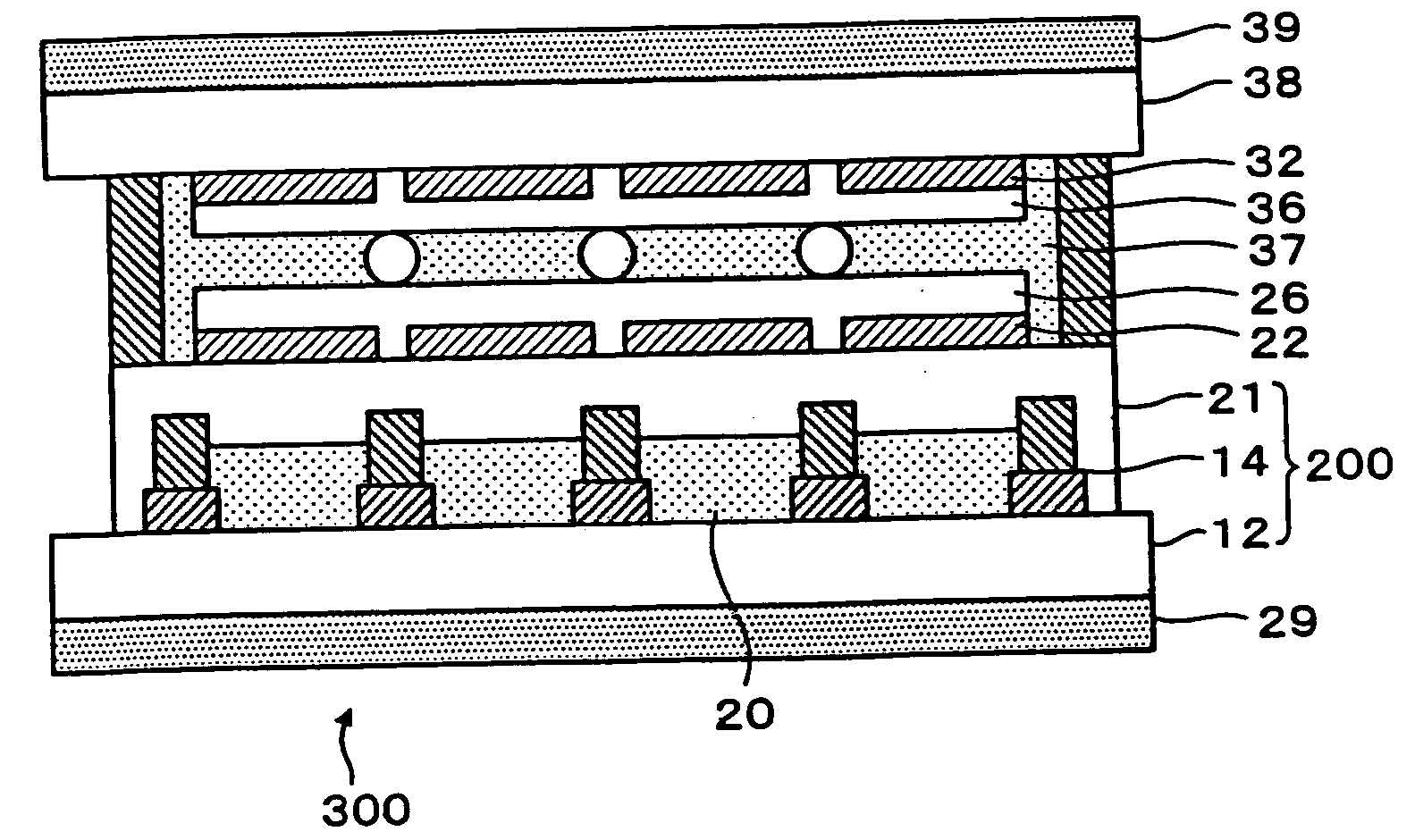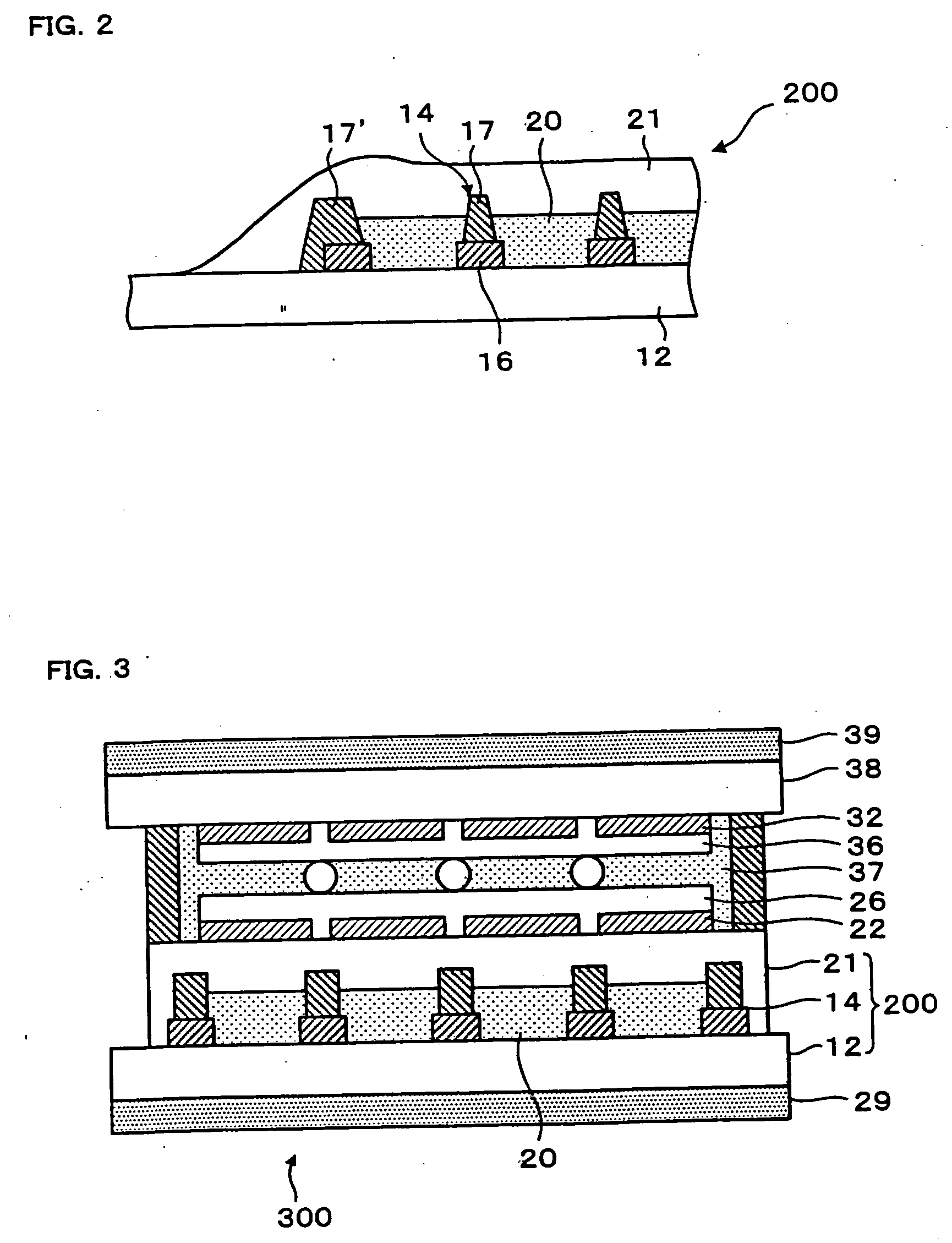Color filter and electro-optical device
a color filter and electrooptical technology, applied in the direction of instruments, luminescnet screens, discharge tubes, etc., can solve the problems of reducing the volume of ink, and affecting the quality of ink
- Summary
- Abstract
- Description
- Claims
- Application Information
AI Technical Summary
Benefits of technology
Problems solved by technology
Method used
Image
Examples
first embodiment
[0035] 1-1. First embodiment
[0036]FIG. 1 is a partial enlarged view of a color filter of a first embodiment of this invention. FIG. 1(a) is a plan view, and FIG. 1(b) is a cross-sectional view along line B-B′ in FIG. 1(a).
[0037] As shown in FIG. 1(a), the color filter 200 comprises pixels 13 arranged in a matrix on the transparent substrate 12; the boundaries between the pixels are divided by partitions 14. Into each of the pixels 13 is introduced an ink in one of the colors red (R), green (G), and blue (B). In this example, the colors red, green, and blue are arranged in a so-called mosaic array. However, other arrangements, such as a stripe array or a delta array, may be used.
[0038] As shown in FIG. 1(b), the color filter 200 comprises a transparent substrate 12 and light-shielding partitions 14. The pixels 13 are formed in portions in which the partitions 14 are not formed (are removed). The inks of different colors introduced into the pixels 13 constitute the coloring layer 20...
PUM
| Property | Measurement | Unit |
|---|---|---|
| thickness | aaaaa | aaaaa |
| thickness | aaaaa | aaaaa |
| thickness | aaaaa | aaaaa |
Abstract
Description
Claims
Application Information
 Login to View More
Login to View More - R&D
- Intellectual Property
- Life Sciences
- Materials
- Tech Scout
- Unparalleled Data Quality
- Higher Quality Content
- 60% Fewer Hallucinations
Browse by: Latest US Patents, China's latest patents, Technical Efficacy Thesaurus, Application Domain, Technology Topic, Popular Technical Reports.
© 2025 PatSnap. All rights reserved.Legal|Privacy policy|Modern Slavery Act Transparency Statement|Sitemap|About US| Contact US: help@patsnap.com



